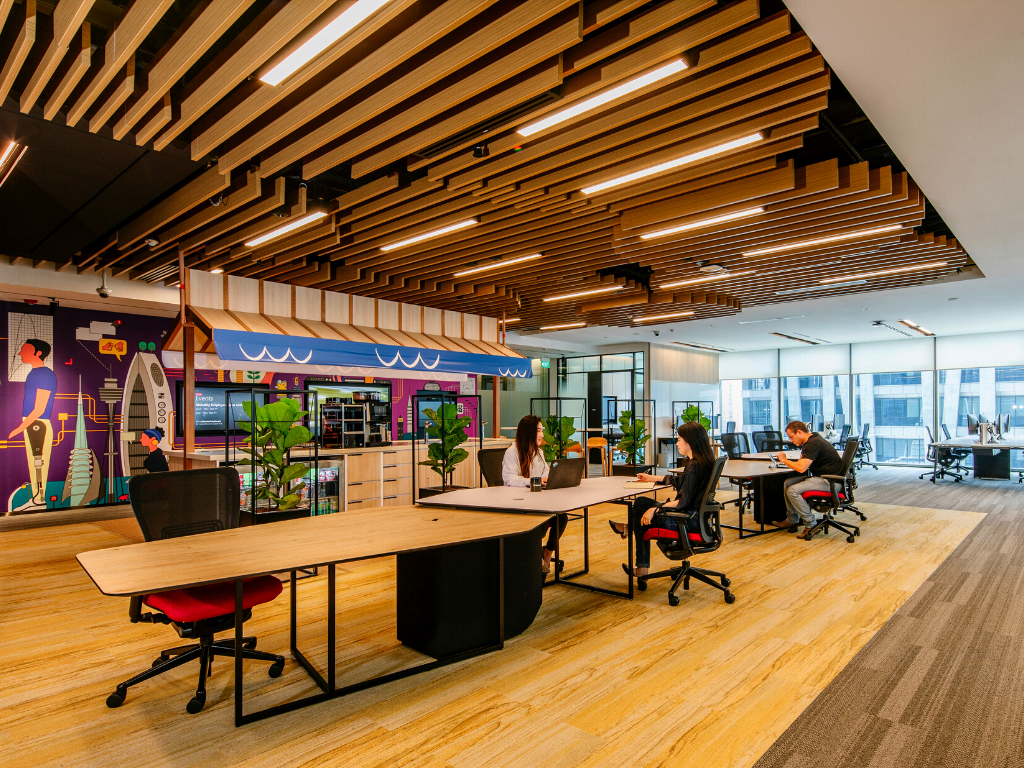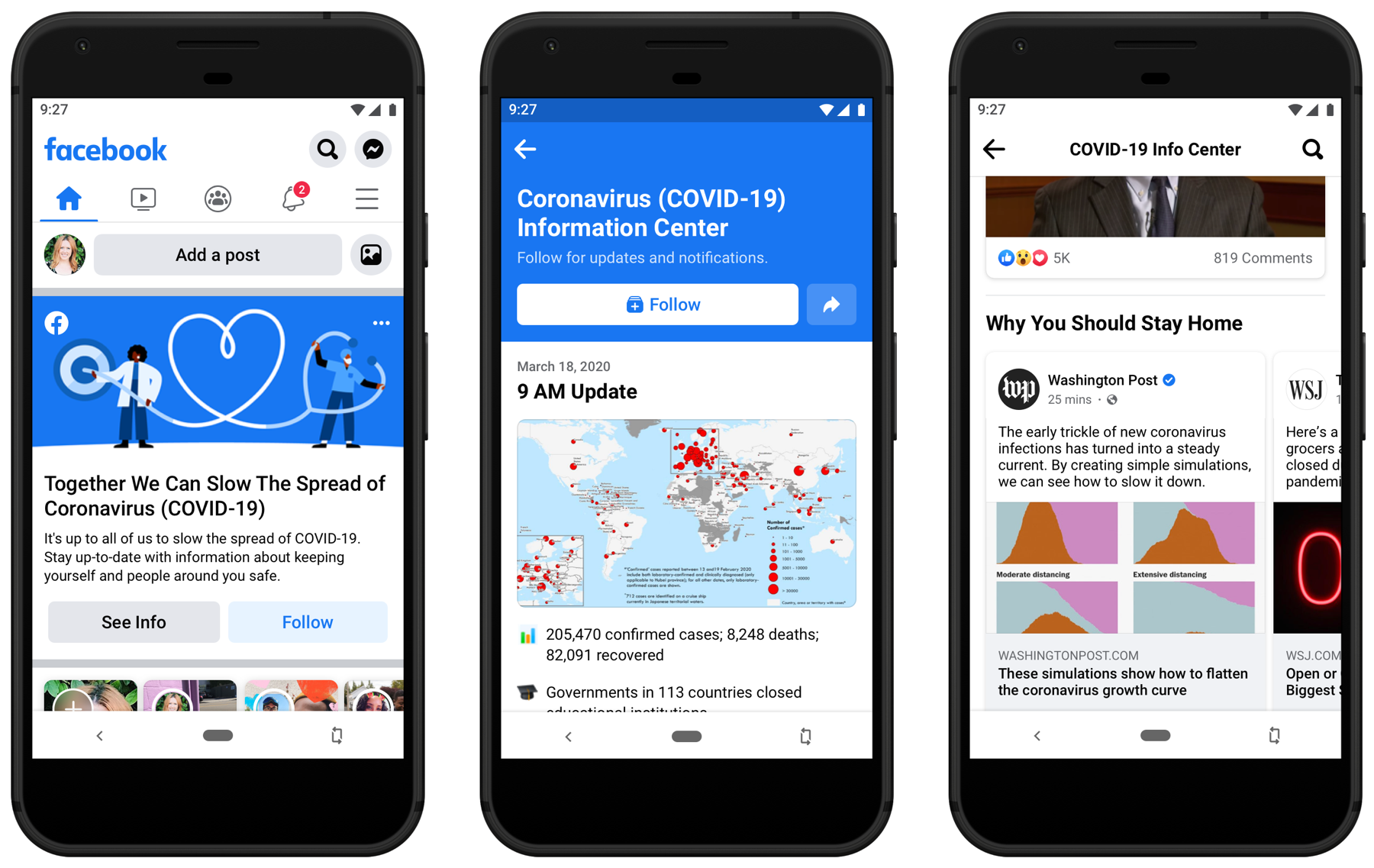“The world is changing. It doesn’t matter which article or research document you pick up. You’ll get a feeling that the world today is very different from where it was yesterday. Regardless of how far back you go, technology has helped propel and accelerate that change in ways that we haven’t seen before,” said Andrea Della Mattea – President, Microsoft APAC.
This digital transformation is reshaping societies and economies across the world. Nowhere is this truer than in the APAC region. The advent of affordable smartphones has reshaped their societies. It’s estimated that this digital transformation will add US$ 1 trillion to the GDP of the APAC region.
Seeing this unfold, Microsoft has doubled down its efforts in the region with the opening of its new APAC regional office inside Frasers Tower in Singapore. Inside its new home in the region, you’ll also find the company’s Experience Center in Asia, which is the first of its kind outside Microsoft’s home of Redmond. We at ReadMe were recently invited by Microsoft to see its new regional office and explore the new Experience Center in Asia. Here’s what we saw.
What exactly is a Microsoft Experience Center?
“People come here to understand what’s possible and available in the market today. These are real solutions and signify the best of innovation that Microsoft has created in collaboration with our customers and partners,” is how Rebecca Hick – Director of the new Experience Center in Asia introduces it. The space serves as a combination of 4 different units within Microsoft. All of them now brought together to help organizations across APAC embrace digital transformation.
To that end, it’s a showcase of technology and this is evident from its first impression. As you step out of the elevator and walk to the entrance, you’ll notice something is different. On any other floor, you’d be greeted with a keycard reader. Here it’s noticeably absent. In its place is a camera sticking out of the wall.

The Experience Zone
Once inside, you’ll immediately be greeted by a bright blue neon board greeted us saying, “Welcome to Experience Center Asia.” Adjacent to it was a coffee shop that offered caffeine and seating space for meetings with a view of the Singaporean skyline. Of course, this was merely the beginning of what is known as the Experience Zone.
Here you’ll find a showcase of different solutions Microsoft has built alongside its partners across different industry sectors. This is where anyone visiting can explore possibilities and experience the technology first hand. As you walk through this zone, a team of specialists from Microsoft, explain the different solutions to you akin to a museum guide. A few that caught our eye are as follows.
Renault F1 + Microsoft = A Data-Driven Edge
Formula One is widely considered to be the pinnacle of motorsports. Its cars are among the fastest on the planet, reaching top speeds of almost 350 km/h. Over the course of a single weekend race, a Formula One race car will use 200 sensors across its body to generate 50 billion data points. To gain an edge with this data and other technologies, the Renault F1 team formed a partnership with Microsoft.
Much of the data from these sensors is considered standard feedback. However, due to the vast amount of data, it’s challenging to find abnormalities. To address this issue, the Renault F1 team turned to Microsoft Azure. The team turned to Azure Machine Learning for identifying anomalies in the data. Thereby, saving engineers time to innovate on the car as opposed to manually checking the data.
Another challenge is that Formula One limits the number of physical test runs and wind tunnel hours a team can perform. This has made Renault’s engineers rely heavily on simulations. Utilizing Azure Batch, the team runs thousands of simulations to fine-tune modifications, pit stop tactics, tire combinations, and other strategies.
“There are so many factors that are constantly changing and can affect race strategy: track temperature, tire performance, what the other drivers are doing. Simulation helps us quickly understand how to configure the car for a particular track.” – Mark Everest, Head of Enterprise Architecture at Renault Sport Racing
Alongside this, Renault’s engineers utilize Microsoft’s Hololens to view and modify a virtual model of the car. With these simulations, the team can formulate strategies without having to constantly replace parts of the car. And with almost 20,000 parts in a car, it’s no simple task to manufacture the right configuration.
Therefore, to streamline its manufacturing process, the Renault F1 team utilizes Microsoft Dynamics 365 and Microsoft Power BI. This particular combination offers the team a set of customized dashboards, in turn, allowing them to make split decisions regarding any modifications at the breakneck speeds races occur.
Training doctors of the future with AR
“CAE operates in 3 sectors where the stakes are high, where there’s no room for error, and where the people need to be properly trained to be ready for unlikely situations that could lead to catastrophes. On-the-job training is dangerous and costly,” states Dr Robert Amyot – President of CAE Healthcare.
The Candian company is a manufacturer of simulation technologies, modelling technologies, and training services. As you might’ve guessed, one of the industries the company operates in is healthcare. Utilizing its simulation technology, CAE helps train future doctors prepare for all kinds of scenarios.
The importance of this training to be comprehensive cannot be understated. Yet, a 2016 study by John Hopkins University identified medical error as the 3rd largest cause of death in the United States. Hence, CAE has turned to AR as a means of training future doctors.
The company formed a partnership with Microsoft and has created training solutions that utilize the Hololens. At the Experience Center in Asia, we saw one of these called CAE Vimedix. It’s described as, “a high fidelity simulator” to learn the process for carrying out cardiac, lung, abdominal, and Ob/Gyn ultrasounds.
The Vimedix system consists of a mannequin and an ultrasound probe. When the sensor is placed over the mannequin, a simulation of the human anatomy appears on the screen. If paired with the Hololens then can grab a body part, enlarge it, and rotate it for a clearer view. Similarly, the company also offers another system utilizing the Hololens called CAE Lucina to simulate childbirth.
Robotic forklifts with AI and Cloud Computing
If you were to stare at a busy street anywhere in the world, chances are within a single hour, you’ll see several Toyota cars. Globally, the Japanese conglomerate is the 2nd largest automobile manufacturer in the world. You may know it’s cars on the street, what you may not know is that it’s the largest forklift manufacturer in the world. To be precise, that title belongs to its subsidiary, the Toyota Material Handling Group.
With the global rise in e-commerce, Toyota Material Handling identified that its customers needed more than forklifts in their warehouses. With this realization, the company developed its vision for the future of logistics. One that utilizes connected vehicles with onboard intelligence working as teams to move goods seamlessly. Originally thought to be a 2028 vision, but through a partnership with Microsoft, it has now become a 2020 vision.
Inside, the Microsoft Experience Center in Asia, you can get a glimpse of this vision. A bright blue robot called the Pallet Drone. As its name suggests, this autonomous robot moves pallets from Point A to Point B inside warehouses. By making use of Azure Cognitive Services, it’s onboard intelligence continuously optimises its route based on its surroundings.
Naturally, a warehouse is chaotic and fluid as several pallets are moved around at any given time. Therefore, when these robots are being set up, the warehouse is scanned to generate a virtual representation of it. In turn, a series of different sensing technologies are utilized to analyse both the physical and virtual warehouse. With this analysis, the robots are capable of finding the optimal route while dynamically adjusting to any obstacles.

The Microsoft Technology Center & Innovation Factory
Walking through the Experience Zone, you’ll have witnessed many other solutions in the realms of retail, disaster relief, finance, farming, and government. At the end of this zone, you’ll be greeted with a large white room surrounded in glass. Inside are a set of workspaces, a few Surface Hubs, and glass whiteboards, which at the time of our visit were used in use by a group actively brainstorming ideas.
Look above and you’ll find the name of this room. This is the Innovation Factory. It’s the space designed to bring ideas to life through either ideation sessions or hackathons. Describing its role, Rebecca said, “It’s meant to be a collaborative space. If a customer visits us asking for an ideation session as part of a long-term engagement then we’d conduct it here.”
Beyond this room and the Experience Zone, much of the remaining open space is dedicated to the Microsoft Technology Center (MTC) in Singapore. Across Asia, the company has several such locations. These spaces offer facility-based technical engagements to show Microsoft’s customers how they can effectively utilize technology across different domains.
Such engagements include executive briefings, rapid prototyping, architecture design sessions, and more. “The overarching goal is to intertwine all these different things together. So a customer will enjoy a frictionless experience with Microsoft and a faster time to value realisation,” said Rebecca describing the role of the Experience Center in Asia.
The Cybersecurity Center
The final area we saw inside the Microsoft Experience Center in Asia was the Cybersecurity Center. Sealed off with another set of doors controlled by facial recognition cameras, this is the most secure of the 4 zones. The Cybersecurity Center serves as a showcase of Microsoft’s threat intelligence analytics and cybersecurity prowess.
To that end, it aims to create awareness about evolving digital threats. Inside these centres, Microsoft brings together lawyers, programmers, and other individuals from different walks of life. Through their combined expertise, the company works to keep modern cyber threats at bay. Currently, Microsoft has 5 Cybersecurity Centers across APAC.
The company also maintains 2 Transparency Centers in the region. Here, government organizations can view the source code of Microsoft products and collaborate with the company on cybersecurity-related issues. Through these units, the company aims to adopt a holistic approach addressing the security needs of both the private and public sector.
Building the office of the future
Following our tour of the Experience Center, we were able to explore the rest of Microsoft’s new APAC HQ. Inside Frasers Tower in Singapore, the company utilizes 12,800 sq. meters across 6 floors, which is being used by 1,400 employees. Minus the 12th floor, which houses the Experience Center, you can see a common theme on these floors.
Spacious public areas serve as spaces for customer meetings and a place for employees to relax. Fitted with sofas, decorated with bookshelves and Surface Hubs, they also feature a mini-coffee shop. Meanwhile, the more secure areas where employees work adopt an open office approach, with a variety of options.
These options range from desks with second monitors to standing desks to soundproof pods. Walking through, it’s evident that Microsoft has invested heavily in offering different working options to suit the needs of individual employees. But a closer look highlights another admirable investment.
Ensuring accessibility for all
Before entering the Experience Center, Rebecca explained to us the reasoning behind the facial recognition camera. She shared that Microsoft is exploring the possibility of phasing out keycard readers in favour of these cameras. The reason is to offer greater accessibility for individuals with disabilities, such as those in wheelchairs.
As we explored the building, it was evident that the importance of accessibility is deeply ingrained into the design ethos of Microsoft’s new home in APAC. To that end, the company has ensured keycard readers, facial recognition cameras, and even tables are height agnostic. Similarly, the many information screens across the building can be adjusted vertically.
Furthermore, all meeting rooms and common use spaces have identifiers in Braille. Additionally, the premises also maintains gender-neutral bathrooms and inclusivity spaces. In a press release, Microsoft described the goal of these initiatives as, “to provide a workplace where everyone can feel safe in being their authentic selves.”
Using IoT to reduce emissions
Walking across the six floors Microsoft occupies, another common feature you’ll notice are the bright purple walls decorated with colourful artwork. Yet, another interesting aspect of Microsoft’s new APAC HQ hides behind these walls.
Across the entirety of Frasers tower are 900 sensors to measure lighting, air quality, and temperature. These sensors are connected to the cloud on Microsoft Azure. With the data collected from these sensors, the goal is to optimise space, air conditioning, lighting, and reducing energy consumption.
A Microsoft Press Release goes onto state, “In future, these sensors can also monitor the carbon dioxide levels in the air, which can negatively affect work performance and neural activity, noise levels by measuring decibels, and energy usage, which can result in savings of up to 25%, as experienced in Microsoft’s HQ in Redmond, Washington.”
Deepening ties across APAC
For Microsoft, the Asia Pacific region is seen to be one of the fastest-growing regions on the planet. As entire countries come online in greater numbers, the company sees a multitude of digitalisation opportunities. To that end, the company has invested heavily with the opening of its new APAC HQ and 1st Experience Center outside Redmond.
Through its new spaces in Singapore, the company aims to form partnerships across the APAC region. In doing so, it aims to empower governments, businesses, and communities to seize the opportunities of the digital economy. Hence, it considers partnerships and collaboration to be vital to unlocking new opportunities for all.
Speaking to the media, Rebecca emphasized this saying, “Our partners are incredibly important to us. We invest a lot of money with strategic partners to create innovative solutions. At Microsoft, we will always be working with our partners in every sense of the word. Our partners build on top of our platforms to bring innovation to life. We deeply value that ecosystem.”





